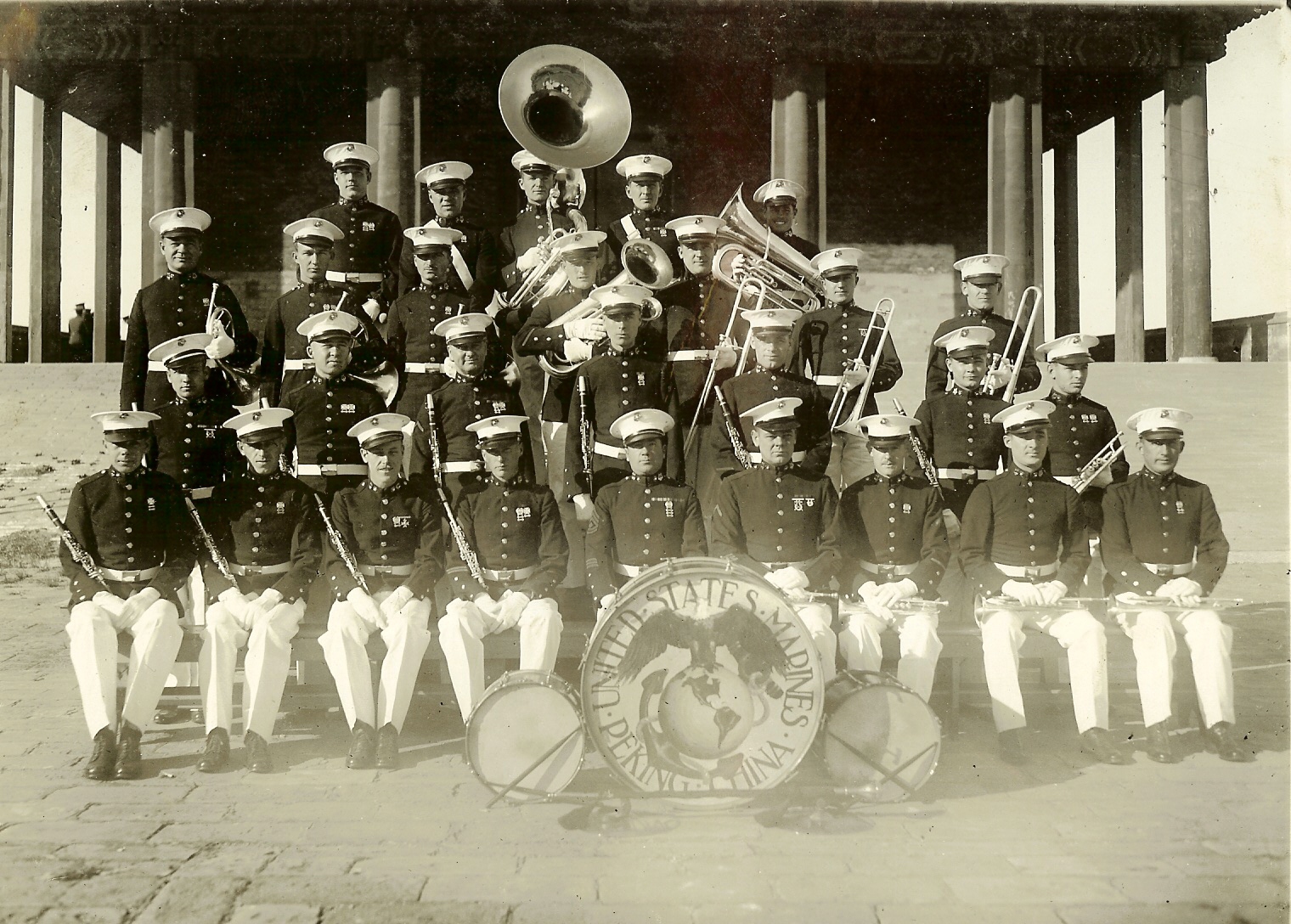
Music played a large part in the lives of the China Marines. In an age before public address systems or personal communications devices, the bugle and the drum was extensively used to communicate messages over long distances. When the first draft of Legation Guard Marines arrived in Peking in 1905 they brought with them both a trumpeter and drummer. In the early days these billets were filled by younger men sometimes not even 18 years of age. Most of whom, if a sample review of the muster rolls proves correct tended to be real discipline problems. Later during our era they were called “Field Musics” and placed in a career track that allowed older, more mature men to fill these positions. A look through a Navy Ship and Gunnery Drill regulation shows there was over 118 individuals bugle calls and marches ranging from “Go to Church” and “Sick Call” through “Guard Mount” and a “Call to Arms.” A Marine’s life was governed by the call of the bugle.
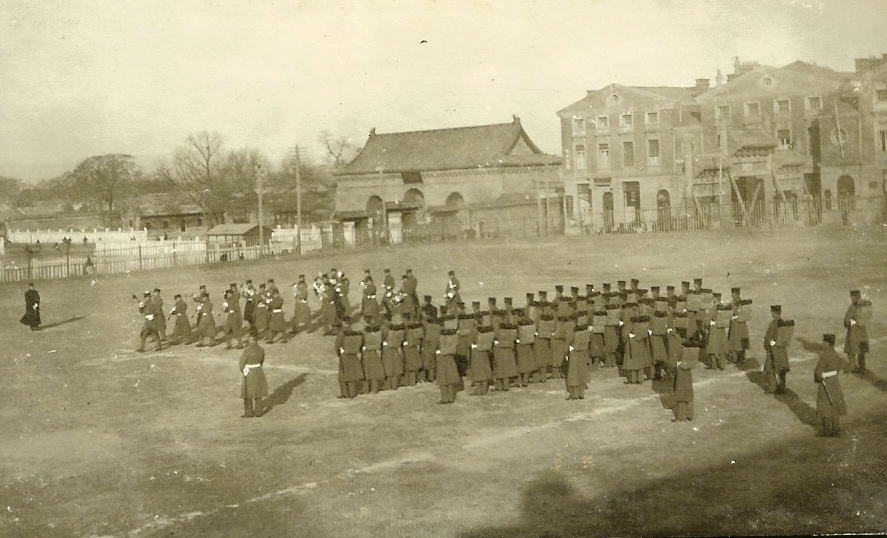
The Legation Guard Band on the American Glacis, c. 1912-13
In addition, regiments in Europe and America utilized bands to entertainment in garrison and to boost morale while in the field. The Marines were no different, with an already famous band based in Washington DC and smaller bands in Cuba and the Philippines. Prior to 1911 there were just too few Marines in China to create a band, however with the expansion of the Legation garrison came to desire to form one. Lead by Pvt. Andrew Niccoli, and starting with just a few acquired or borrowed instruments, these men played as an additional activity outside of their regular company duties. In 1913 Pvt J. Earl Snively indentified so strongly with his band membership that he included it on a personal stamp for use when writing home. By 1917 the bandsmen began wearing the collar lyres of a Marine Corps musician. In 1919 it was noted the Marines brought the first saxophones to this part of China. Around 1920 the Legation Band was recognized as an official formation within the Guard detachment and held in compliance with Navy polices governing band operations. Through the 20’s and 30’s the Guard band proved popular with both the Legation and Chinese communities. Editions of the Legation Annual state on a daily basis the band would perform morning colors followed by a concert. In addition they performed evening concerts every Tuesday and Friday. Along with their normal schedule they were utilized by the American Minister to China for special events he might host. The band also played at local universities, the Paomachang racetrack and at a number of mission’s schools. Lastly they played on a local radio station XGOM once a week. In 1938 when the Guard detachment was split between Peiping and Tientsin, the band remind based in Peiping but deployed to Tientsin as needed. Starting in May 1940 the band was slowly drawn down along with other China Marines. The remaining band members were amalgamated into the 4th Marine band.
When the 4th Marines arrived in Shanghai they brought a band that became as equally famous as their Peking counterparts. Although I am still researching this portion of the section, the 4th Marine Band performed at a number of official functions as well as at the Fourth Marine Church each Sunday.
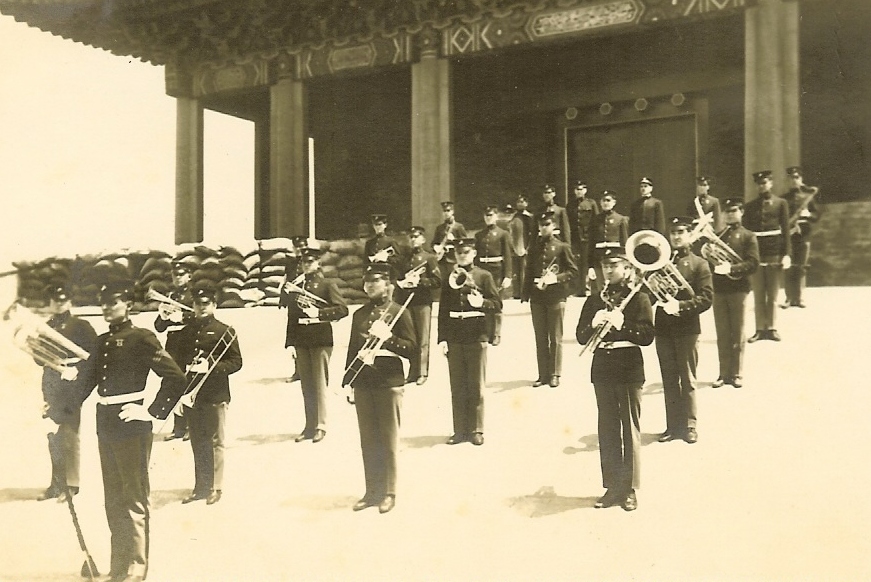
The Legation Guard Band Chein Men Tower c.1919
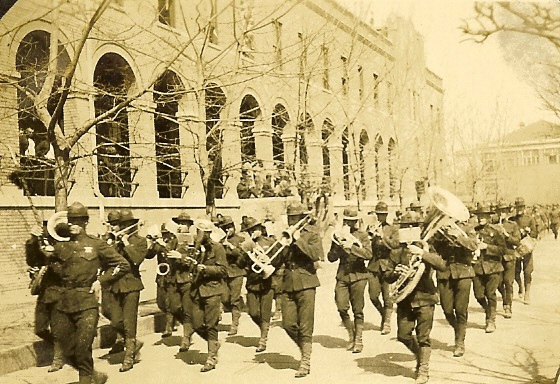
Marching down the Company Street, c.1925
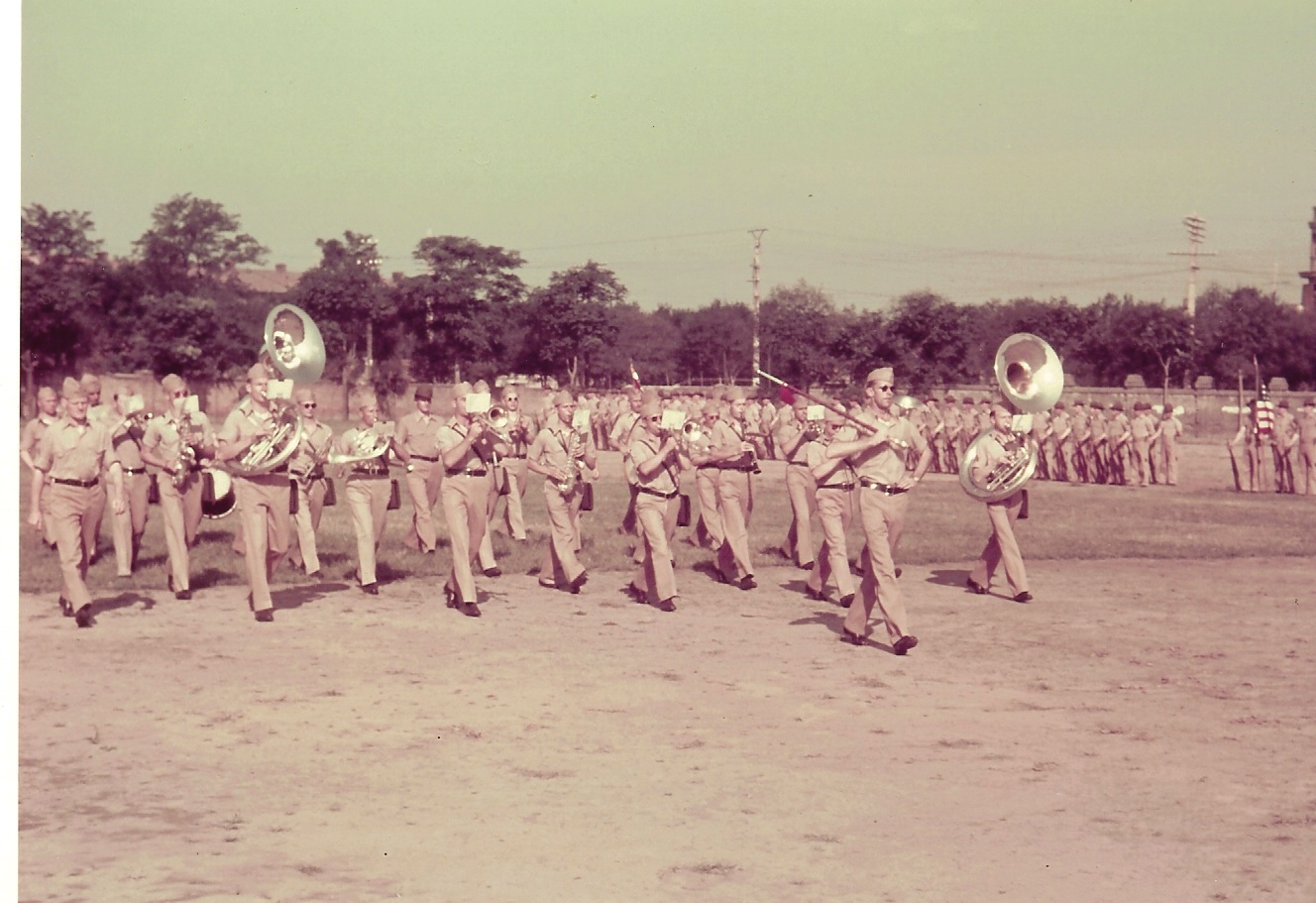
Band Practice Tientsin, c.1938
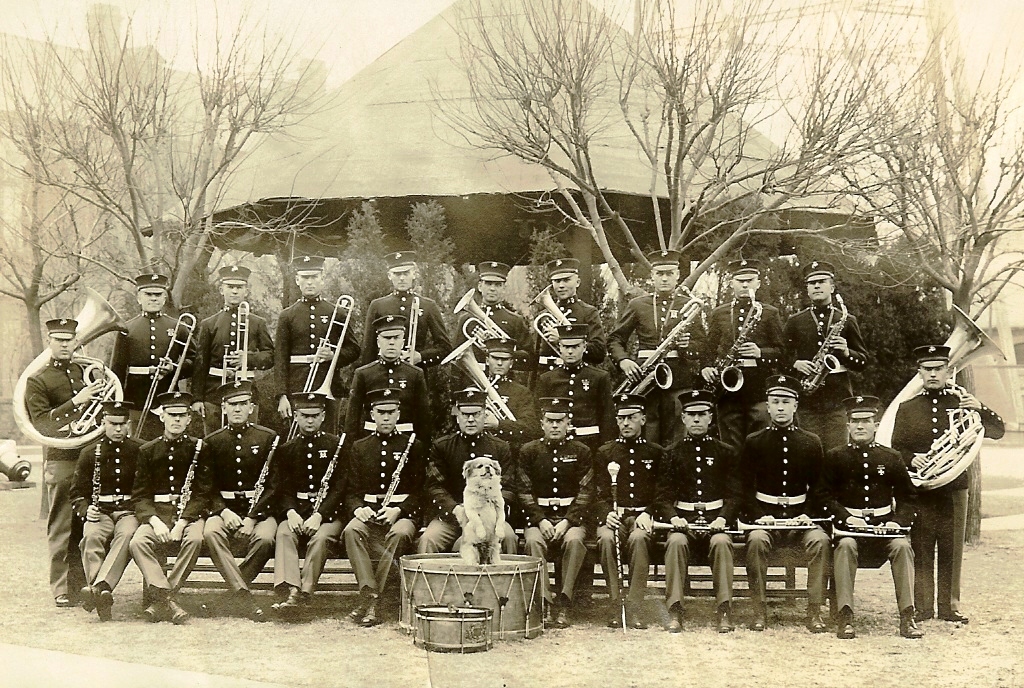
The Legation Detachment Band, c. 1923

